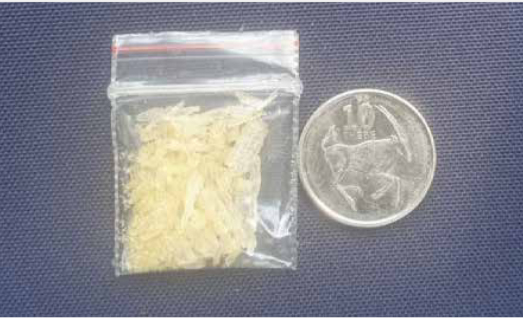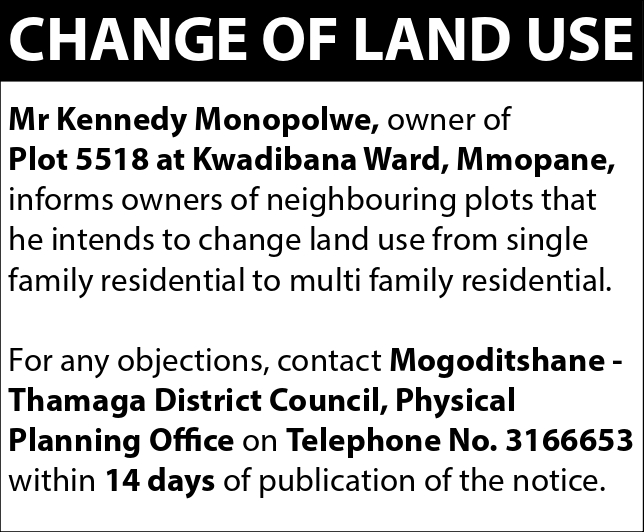Botswana has been identified as both a transit route and destination of meth, a dangerous neuro-toxic hallucinogenic originating in Afghanistan whose entry point is the Atlantic port of Walvis Bay in Namibia and the Trans-Kalahari Corridor. Mainly Chinese drug cartels are alleged to be behind the highly addictive and costly substance whose use can lead to mental derangement and alienation, LAWRENCE SERETSE & LAONE MOLELO report.
A global report has identified Botswana as a booming market for a dangerous drug called methamphetamine.
According to a commodity report titled “A Synthetic-Age: The Evolution of Methamphetamine Markets in Eastern and Southern-Africa” carried out by Global Initiative Against Transnational Organised Crime (GIATOC) in March 2021, Botswana is home to a small but growing meth-using population.
As is the case in other countries, authorities point to foreigners as being the primary culprits in consumption of meth. In Botswana, the authorities point to Chinese workers and others working in the domestic diamond mining and construction industries.
The meth is taken over land to South Africa from Mozambique in a similar routing and manner as that for heroin. Upon arrival, the kilogram bags are transferred by the importers to secondary suppliers for further distribution and retail sale. Chemical analysis conducted on samples of this new methamphetamine supply have confirmed its origin to be Afghanistan, says the report.
Thus, South African meth distribution is grounded in two major transnational supply chains of finished crystal meth – one originating in Nigeria and being imported by Nigerian syndicates, with a second originating in Afghanistan and being imported along traditional heroin routes through existing trafficking routes dominated by Pakistani (and probably also Iranian) drug trafficking syndicates.
“There is no evidence to-date that sufficiently quantifies the consumer demand for illicit drugs in Botswana, including meth. Such allegations about use therefore are unfounded and anecdotal at best” says GITOC in the report.
It has also been reported that Botswana meth comes from Johannesburg supply points and costs between P450 and P500/g (or R600–700). This price range is about twice the price per gram for meth in neighbouring South Africa. There are no wholesale market points in the country or any significant domestic production facilities. The report further indicates that retail sales are organized in the same way as they are in South Africa, with most of the available meth being retailed by price rather than weight.
Crystal meth is the preferred product when available in the market. “No instances of tablet meth were identified by researchers, and no instances were uncovered of meth being injected in place of smoking it,” the report notes.
The Distribution Network
Understandably, Gaborone is the central distribution hub for meth in Botswana. Situated close to two international overland border gates with South Africa, supplies are imported almost exclusively overland from production and storage caches operated by Nigerian syndicates based in Johannesburg.
Major distributors in Botswana are alleged to be mostly of Nigerian and Chinese origin, but include other nationalities (e.g. Congolese). Batswana meth distributors tend to be few in number and have less market influence, often contacting Chinese suppliers for information when queried about import or distribution characteristics.
The report observes: “Given the volume of Chinese investment and involvement in development projects in the country, it is not surprising that Chinese syndicates have tended to usurp Nigerian interests in the distribution of meth and other illicit commodities in Botswana. They can leverage the existing Chinese corporate supply chains that link Gaborone with the Chinese mainland through myriad international networks. Although landlocked, these organisational entities have the benefit of being on the pathway of a large volume of Chinese-originated cargo trade that transits through Walvis Bay port on the west coast end of the Trans-Kalahari Corridor, a trafficking corridor that passes through Gaborone on its way to a primary terminus in Johannesburg, South Africa.”
Investigators found that while meth is not manufactured in volumes in Botswana, it is possible that small-batch kitchen lab-type operations emerge from time-to-time with precursor supplies from China-based chemical manufacturers coming from the container-based shipping hub of Walvis Bay in neighbouring Namibia.
As in South Africa, yellow meth is also found in Botswana. This is mainly because the meth market in Botswana is dependent on supply from South Africa. Botswana’s small but growing domestic meth consumer market is supplied largely with meth that appears to be produced in South Africa and is of average to good quality. The average retail price was P500/g, equivalent to around R700 (or €37). Neither ‘Mexican meth’ nor ‘Pakistani meth’ was found in the Botswana market, the researchers concluded.
WHAT OFFICIALS SAY
Botswana Police Service spokesman Dipheko Motube has confirmed that meth has hit the local market, adding that although use of the drug is far from the extent of cannabis, there is a need to tighten borders. “We have made arrests of people in possession of this dangerous drug,” Dpheko says. “But I should make it clear that use of this drug is ranked fifth after cannabis, cocaine and others. The people we have arrested so far are Batswana who consume it.”
Effort to arrest the situation of meth include use sniffer of dogs at points of entry. “We also do public awareness campaigns,” Motube told The Botswana Gazette in an interview. “We usually have a stall at market fairs where to make people aware of these dangerous drugs.”
The Clinical Programme Manager of Botswana Substance Abuse Support Network (BOSASNET), Lorato Koosaletse, says the organisation has received and treated some clients who use crystal meth. “It is a serious concern as any psychoactive substance is,” says Koosaletse. “This country is a corridor for substances and our borders are very porous.”
She describes crystal meth an addictive substance whose users can resort to illegal means of sustaining their costly habit that also predisposes them to risks of losing their jobs and/or families. “We try to educate the public about the effects of substances but a more durable approach lies in addressing psychological trauma and other mental illnesses that assail most people who use these substances and that may actually be driving them to use in the substance in first place,” Koosaletse says.




